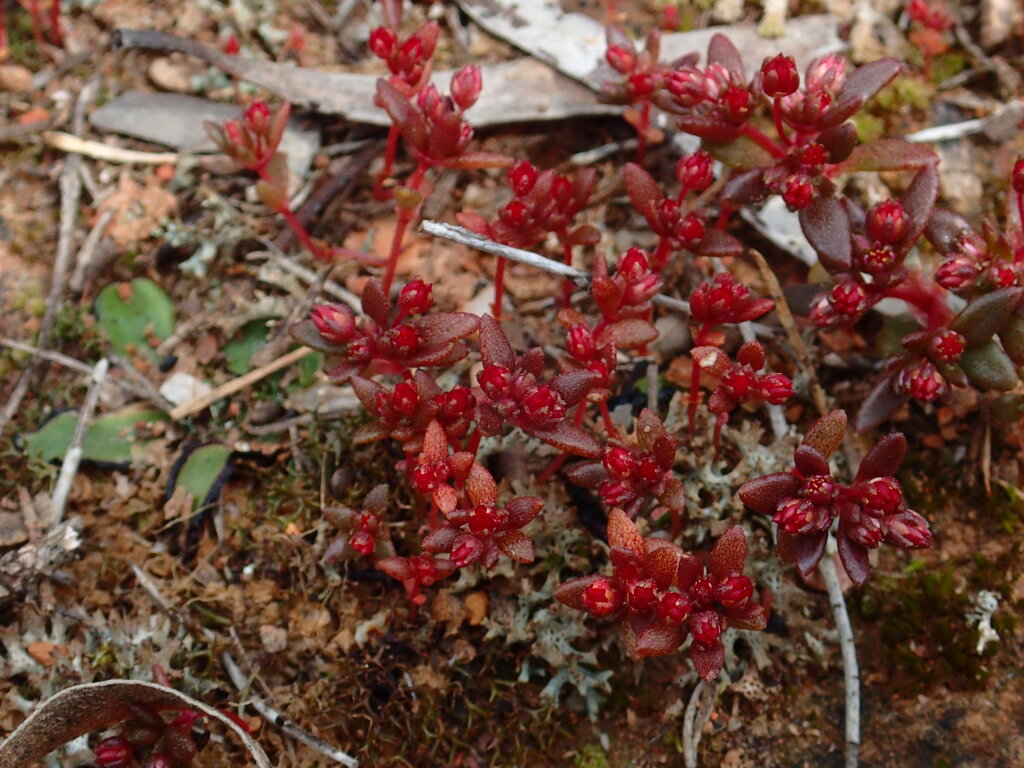Crassula closiana
(Gay) Reiche Stalked CrassulaAnnuals with erect, usually wiry branches rarely to 10 cm, little branched and rarely branched from the lowest 2 nodes, smooth. Leaves oblanceolate, rarely elliptic, 2.4–10 mm long, 0.8–3.5 mm wide, obtuse or rounded, rarely acute, flat or slightly convex above and somewhat convex below. Inflorescence 1 (rarely several) thyrses, each usually with 2 or 3 dichasia with lateral flowers of terminal cymes sessile or almost so when fruiting. Flowers 5(rarely 4)-merous; calyx-lobes triangular, 1.5–2.5 mm long, pointed, covered with papillae towards the apex; corolla white, more or less tinged red, lobes ovate, 1.2–2 mm long, acute, spreading; nectary scales usually T-shaped, 0.3–0.4 mm long, 0.6–0.7 mm wide, truncate to slightly rounded; carpels elongate-reniform, with 18–22 ovules. Follicles erect, smooth, releasing seeds through apical pore; fruiting pedicels rarely longer than 18 mm long; seeds 0.25–0.32 mm long, with longitudinal ridges with well-separated papillae. Flowers Aug.–Oct.
LoM, MuM, Wim, GleP, VVP, VRiv, RobP, GipP, OtP, Gold, CVU, GGr, DunT, NIS, HSF, OtR. Also WA, SA, Tas. South America. Grows usually in poor clay to sandy soils often in association with C. decumbens.
Australian plants differ from South American ones examined in having papillose rather than regularly serrulate upper leaf margins, similarly papillose calyx-lobes, and usually 4- or 5-merous flowers. Although it has a similar distribution and often grows together with the superficially similar C. decumbens it is readily distinguished by its umbellate terminal cymes as well as its short and almost globose seeds with widely spaced papillae on longitudinal ridges.
Toelken, H.R.; Jeanes, J.A.; Stajsic, V. (1996). Crassulaceae. In: Walsh, N.G.; Entwisle, T.J., Flora of Victoria Vol. 3, Dicotyledons Winteraceae to Myrtaceae, pp. 542–555. Inkata Press, Melbourne.
 Spinning
Spinning

